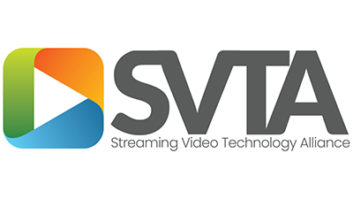When we look back over 2019, we see a year of really significant change. One of the biggest areas is the rise and rise of video streaming across a diversity of viewing platforms. We have been witnessing some basic changes in consumer behaviour for some time. From their perspective, consumers are seeking to transition to more flexible ways to consume content.
The MSO/Aggregator model is steadily being replaced by direct relationships between content creators and their consumers. This is fragmenting the market. This ‘cord cutting’ idea that going OTT is cheaper for consumers is a myth. Consumers will replace one major subscription with multiple individual subscriptions, and I don’t see any significant cost savings to be made.
However, this will drive the market since now we see content creators standing up their own distribution channels. These can be their own standalone channels or through third-party platforms, such as Brightcove and BAMTech. In this environment content creators are in control of their brands to a far greater extent.
Then there is a large group of linear TV broadcasters that are seeking to replicate their channels in OTT. These factors are definitely driving the technology companies to support these moves. At Telestream, it is driving our roadmap, and in conversations with colleagues at Harmonic and other companies, they say the same thing. Our collective challenge is how to build more cost-effective, flexible and elastic origins.
Is it an OTT-first approach, and if so, how important is a quality consumer experience?
Looking at one of our core markets – owner operated linear multi-channel broadcasters – they are almost exclusively focussed on OTT build out. Currently, virtually everything we are doing with them is in response to the challenge of how to create an OTT network that is on a par with linear television in terms of quality of service and experience.
The transition from OTT being a novelty to having the same consumer expectations as the linear TV experience in your living room is massive.
The bigger operators in this market want to control the viewer experience and build their brands. Today, the technology is not experimental: there has been a shrinking in the options for how they distribute content across all the consumer platforms that they need to cover.
It’s not as much of a mystery for them as it once was. So, I believe that many of the bigger players will build their OTT channels out internally, whereas earlier, the strategy was to wholesale outsource the challenge. This internalisation process will include the entire workflow including App development for these platforms. This will enable them to better control consumer behaviour, consumer experience, monetisation and analytics of the process.
From a technology perspective, you can’t just throw the QoS responsibility at companies such as Akamai, who really don’t want to be in the media business – they want to be in the data business.
As they learned from the IPTV transition, there is a massive difference between IP for data and IP for media. At Telestream, the development of our iQ portfolio is driven by the problems that are unique to the delivery of media over IP. This continues to be true for OTT delivery – it’s just a different set of problems. Our customers seek control over this, and also to control costs. When OTT was an experimental novelty, organisations weren’t staking revenue on these new channels. But as they transition to OTT becoming the core business then bottom-line profitability is directly related to costs.
For Telestream, this speaks to the level of integration we have within our customers’ workflows. As a technology vendor, we can do so much more depending on the amount of the whole process that we’re participating in. OTT is not as componentised as television was in the past. We must have a broader portfolio of system solutions. We’re not there yet, but strategically it is where we are heading.
In practical OTT applications, the more that you’re involved with across the entire workflow, the more value you can add, especially in the absence of standards. Take latency as an example. If you can inject instrumentation into the signals that you’re encoding early in the process, this allows you to pick up problems as they travel through the distribution food chain, particularly when you lose sight of the signals.
If you can instrument your signals up front it enables you to measure latency and find problems further out in the network. Our customers won’t find this level of integration in a multi-vendor scenario unless the vendors get together and generate standards that they can all interoperate with.
Is latency still an issue in live streaming?
Absolutely, latency is still an enormous issue – for all the reasons that have been explained ad nauseam! If it’s sports, or anything that is timely, you need to reduce latency as much as possible. If the consumer is switching between live linear TV and OTT it is essential.
The big question is what are your expectations? The elegance of http-based OTT is that it enables media distribution through content delivery networks that don’t treat media any differently than a web page. We’re leveraging an infrastructure that is very broad based as long as we can make everything look like chunks of data that can be accessed via http. With this comes a requirement to segment the video into chunks that can be cached on http. This is where the latency is introduced.
When we first did it, people said, “Wow, that’s cool! Yes, there’s latency but the positives more than outweigh the negatives.” Now, as this is understood, there has been a search to optimise the video through conventional approaches. If we can reduce latency to around 10 seconds without having to change the network that is largely problem solved for the vast majority of applications.
Beyond this, if you’re into gambling or some other time critical application where latency needs to be measured in frames, you need to look at different technology. For these apps, there exist technologies that will get latency down to linear TV levels. But, the standardisation efforts of DASH and HLS have largely solved the problems for mainstream applications.
So, does OTT follow the money?
One area of major change in new revenue models is between the technology vendors and the broadcasters that are building OTT services. Our relationship has completely changed: it is migrating towards consumption-based arrangements rather than infrastructure investment.
Initially, it was a metered arrangement, but now more of our customer relationships are moving towards a subscription model. The customer needs our Intellectual Property – they have an anticipated use of it in a year of X and they don’t want to incur massive ‘taxi meter’ bills. They are much more interested in providing Telestream with an annual commitment based on a prescribed level of usage. This way, they have a defined cost, which they can build into revenue projections – and so can Telestream. It’s good business for everyone.
We live in interesting times. When an operator has control over the network, there are many things we can do to improve or enable other experiences. However, at some point there needs to be more content. Then your bottom-line costs depend on how much it costs to create the content; how much it costs to publish the content and how much can the content owner charge consumers to view it.
At Telestream, from a Cloud perspective, we can make it very straightforward to publish more content. Assuming our customer has content of a quality they can monetise, their impediment is the ability to get it to their audience without having to capitalise their infrastructure in order to do this.
This is Telestream’s OptiQ story. We need to create thousands, or even tens of thousands of narrowly focused channels that people are prepared to pay to view. How can we democratise content and the viewing experience? That’s the OptiQ challenge.







